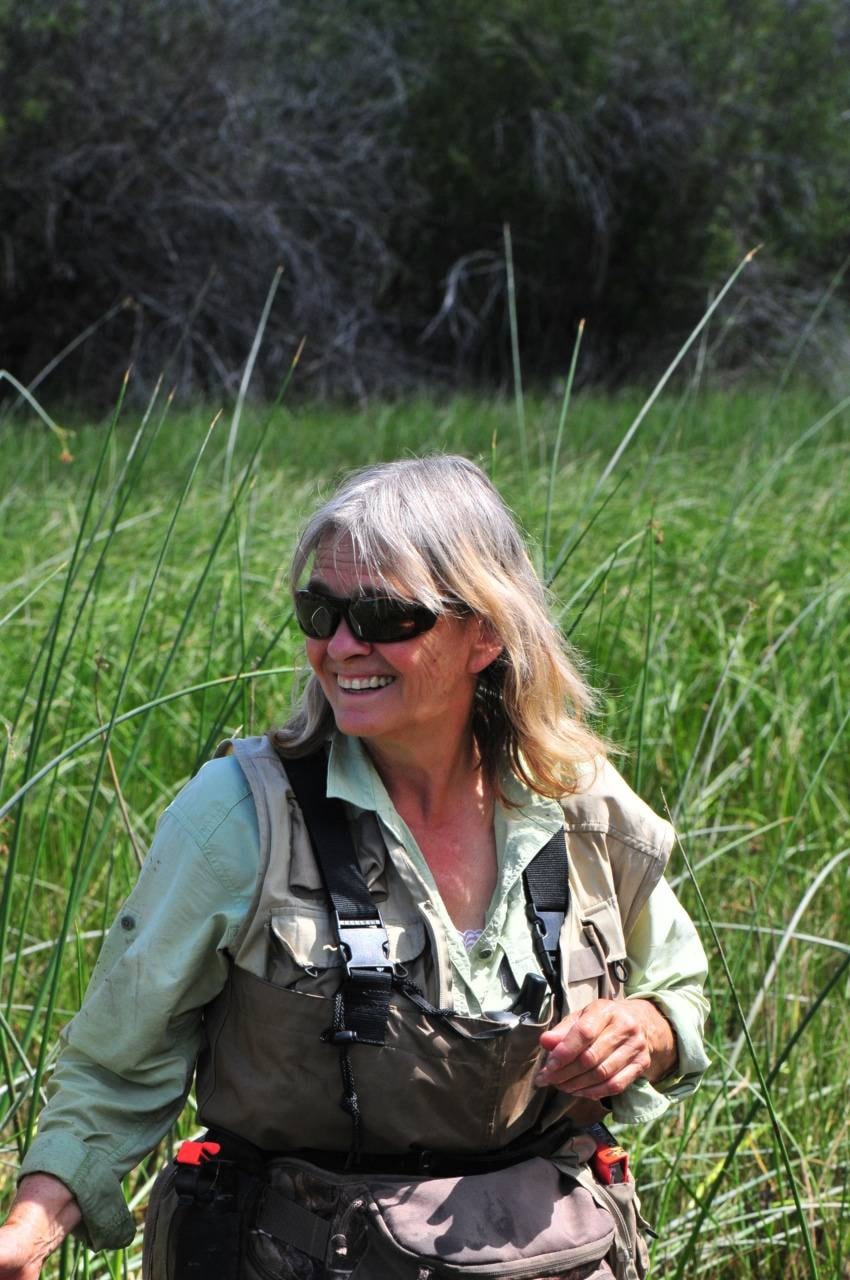For the Bulletin
Kimberley-based consulting biologist Penny Ohanjanian has fond memories of tromping around a marsh as a four year old with mini binoculars in hand, accompanying her godfather who was an amateur ornithologist. These experiences sparked a lifelong love of birds and wildlife that was further invigorated by an influential Grade 8 biology teacher.
“She was a woman, and she was a marine biologist, which in those days, the late ‘60s, was very unusual,” Penny said. “She was really inspiring for me.”
But finding herself “sidetracked out of science” through the rest of high school, Penny opted to pursue a degree at the University of British Columbia in Ancient Greek and Latin literature and history, which led to an opportunity to earn her Masters in Litterae Humaniores at the University of Oxford in England.
“But I couldn’t even watch a Jacques Cousteau special without getting all anxious that I’ve got to do that, I’ve got to be a biologist.”
Penny determinedly returned to Canada to pursue a Master in Science at Simon Fraser University under the supervision of ornithologist Nico Verbeek, a life changing decision that landed her in Creston for her MSc project on red-necked grebes, and led to her settling in the Kootenays where she’s been based ever since.
“I’m really grateful to have the two sides of knowledge,” she said. “(The Liberal Arts) taught me how to write, and the demanding work at Oxford was good prep for research.”
For over 30 years, Penny has been specializing in rare and endangered birds and amphibians. One contract near and dear to her heart was work on the Coeur d’Alene Salamander. When she started, the salamanders were known in four locations and red-listed in B.C.; by the time she finished four to six years later, they were downlisted to special concern (today they are yellow-listed in B.C.).
“As a general principle,” she said, “species at risk are important because we may not have recognized or identified all the pieces of the ecological puzzle of the ecosystem, so it’s important to reinstitute the most complete ecosystem that we can have.”
Since 2003, Penny has been a member of the Northern Leopard Frog Recovery Team. Endangered in British Columbia, the northern leopard frog is being reintroduced to the Columbia marshes, a multi-year project led by Penny that receives annual funding from the Columbia Valley Local Conservation Fund administered by KCP on behalf of the Regional District of East Kootenay.
“I worked with (northern leopard frogs) in 1995, when I discovered with Doug Adama that they were still persisting in the Creston Valley,” she said. “It was hard to find them and one night we heard them calling, so that confirmed they still existed in this one place in B.C.”
The Recovery Team went on to successfully reintroduce leopard frogs to Bummers’ Flats near Fort Steele; then the attention turned to the Columbia marshes. With a combination of wild‐sourced tadpoles from Creston, and captive-bred individuals from the Calgary Zoo and Vancouver Aquarium, it is expected that, given the release of 8,000 tadpoles per year over the next five years, leopard frogs will become established again in the Columbia marshes.
“It’s a hugely dedicated team. It’s going to take a while but we have reasons for optimism.”
When asked what defines her career in species-at-risk preservation, Penny is quick to answer:
“It’s the feeling at the end of the day that you’re doing something of value, it’s a noble calling.”
The Kootenay Conservation Program is a broad partnership of over 80 organizations from across the Kootenays that works to conserve landscapes in order to sustain naturally functioning ecosystems. Learn more at www.kootenayconservation.ca.
